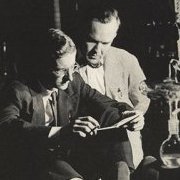-
Posts
4586 -
Joined
-
Last visited
-
Days Won
12
Content Type
Profiles
Forums
Events
Everything posted by hypervalent_iodine
-
Autumn_Man is banned as a sock puppet of pmb. Strange course of action for someone who so badly wanted his account deleted, but no matter.
-

FUN WITH QUANTUM THEORY! MAGICAL SQUARE!
hypervalent_iodine replied to The Architekt's topic in Speculations
You must have seen the picture I took of Captain Panic at the office. I don't know where you get dumb from, though. How many asses do you know that can use a computer? -
Yeah, there's no way our friend is getting carbon tet. DCM is much simpler to obtain. And recryst with ethanol works just fine.
-
Not a problem! My common sense gets the better of me on a daily basis.
-
! Moderator Note With election time upon us all, it is apparently pertinent that we remind everyone of a few of our forum rules. ! Moderator Note Discussing politics does not mean you need to insult the people or groups of people you happen to disagree with. SFN is not and will not be a camping ground for people to start, continue or in any way be part of anything even close to resembling a smear campaign against politicians or their respective parties. This includes bad mouthing just as it includes citing false allegations and flat out lies as the truth. That sort of behavior is not conducive to discussion, which as it turns out is something we aim to foster, and it will certainly not be tolerated here. This goes for everybody. Now please, get back on topic.
-
This could just be me, but I'm really not seeing the difference in the two examples you cite? Both place the 'inverse unit' (mol-1 and hr-1) last when describing them. In any case, it's really just convention. For instance, grams per mole is used to describe g mol-1 (or g/mol); that is to say, for every mole of substance X, we have Y number of grams (which is what we mean when we say per). That brings me on to something I wanted to comment on in your OP: Well yes, because moles per cubic dm (mol dm-3 or mol/dm3) is vastly different to cubic dm per mole (dm3 mol-1 or dm3/mol). Similarly: It doesn't make sense if your describing km h-1 (i.e. you travel X km in 1 hour), as hours per kilometer (i.e. it takes you X hours to travel 1 km) would be stated as h km-1 and as such, does not correspond to the same thing.
-
Definitely not, for a few reasons. 1. FeCl isn't a thing. Iron has oxidation states of (typically) +2 and +3 and the chloride ion has a -1 charge. To balance the two charges, you have to have either 2 or 3 chloride ions bound to the iron to give either ferric (Fe3+; FeCl3) or ferrous (Fe2+; FeCl2) chloride. 2. No way will table salt and iron metal generate sodium metal. If it did, your solution would very quickly catch fire. Pretty much the only thing that will happen is the iron will become rusty from being in an aqueous solution.
-
Then you'd still be wrong. There are (IIRC) 90 naturally occurring elements, max atomic number 92.
-
The latter. A common problem with students learning organic chemistry is that they don't spend enough time trying to understand the coursework. Though there are some serious pitfalls in the way o chem is taught using the traditional lecture-style system, a survey style course would be considerably worse. You don't get to spend as much time learning and understanding the details, which happen to be quote important when it comes to problem solving. Organic chemistry is not a course you can rote learn. You have to actually know what's going on. How much money are you willing to spend, will you be using organic chem in the future and how in depth is your course? Any of the star organic chemistry books will give you a good foundation in the basics. The texts by Clayden and McMurry are both excellent books, but they are pricey (given the price of McMurry's new edition, I would actually get an earlier edition copy, which are just as great and much, much less expensive). Clayden is a must have for someone studying organic chemistry as a major and goes into considerable depth in a lot of areas. McMurry doesn't go too much beyond what you would find in a second year course, but it does have considerable focus on biochemical mechanisms, enzymatic reactions, etc. McMurry also has the benefit of having a student solutions book for all of the chapter problems, which is of great assistance when studying if you can find a copy.
-
! Moderator Note Could this perhaps get back on topic? A reminder that the question posed in the OP was as follows:
-
! Moderator Note Aemilius, Our rules cover non-commercial sites, threads within SFN and commercial sites. We are a discussion forum and we cater our rules to foster exactly that. Your thread here was designed solely to get people to go to another website to partake in discussion there. This is unacceptable and against our rules. Again, if you want to discuss your mechanism, do so here. Incidentally, we also have rules about insulting other members. And if you would like to raise your concerns about my moderator action, please use the report feature (yellow triangle on the bottom left) or PM a member of staff rather than derailing this thread.
-
Can I ask what you need this for? It will help us to help you better if we know.
-
! Moderator Note Pymander, If someone has the decency to read your posts and reply to you in some detail, common courtesy dictates that you should respond with the same.
-
! Moderator Note As per my last mod note, Pymander, this is not the place to push your speculations. We have a forum for that, which you should be well aware of since you already have a thread there. I have removed your comment here on this basis. Please take some time to review our forum rules and ensure that they are observed when posting here, or staff may be forced to take further action on your account.
-
! Moderator Note Pymander, Please stop using this forum to spam your speculations and pet hypotheses. It stops here. Any more comments of this nature will be removed.
-
! Moderator Note Hi Aemilius, I've removed the link from your OP as we don't allow blatant attempts at advertisement on SFN (see here). If you wish to discuss your mechanism, please do so here.
-
! Moderator Note Let's keep the comments less insulting, please. That goes for everyone.
-
! Moderator Note To add an official note to swasont's post, rigney, facts do matter when you're posting here. Deliberately posting anything less becomes a matter of soap boxing, which happens to be against our rules.
-
! Moderator Note David Levy, Please review our forum rules. Thread hijacking is not permitted on this forum and we aim to keep the speculations and pet hypotheses out of the main stream science forums. If you wish to start a thread on the topic yourself, you may do so in the Speculations forum. Should you choose to do this, please also have a look at the Speculations forum rules and ensure that you adhere to them.
-
pmb has been permanently banned. This is partly because it was requested, but a large majority of the reason is due to his inability to pay attention to our rules while simultaneously demanding everyone else follow them to the letter; and frankly, we're all a little bored of all the high-maintenance drama.
-

CAn we get an ignore list?
hypervalent_iodine replied to pmb's topic in Suggestions, Comments and Support
Michel, you realise of course that a lot of moderator action and discussion with members takes place via PM? There are only so many times we're going answer the same questions by the same people. -

CAn we get an ignore list?
hypervalent_iodine replied to pmb's topic in Suggestions, Comments and Support
What Captain Panic said. Do you really need an entire function just so you can find the will power to ignore someone's posts? -
! Moderator Note b^2, Please don't use other threads to try and push your own pet theory.
-
Not if you want it to be pure. Ethanol is miscible in water, so you won't be able to wash out the other compounds. Edit: And caffeine is not incredibly soluble in room temperature ethanol, so you'd be limiting your yield.

